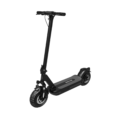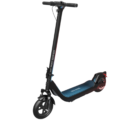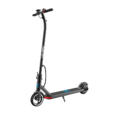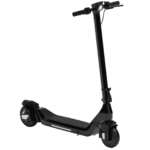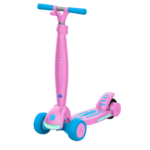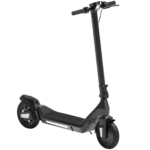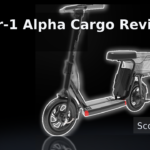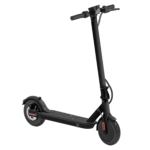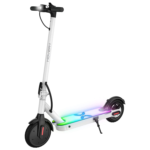- Home
- Scooters
- Electric Scooters
- Hover-1 Neo I
Hover-1 Neo I


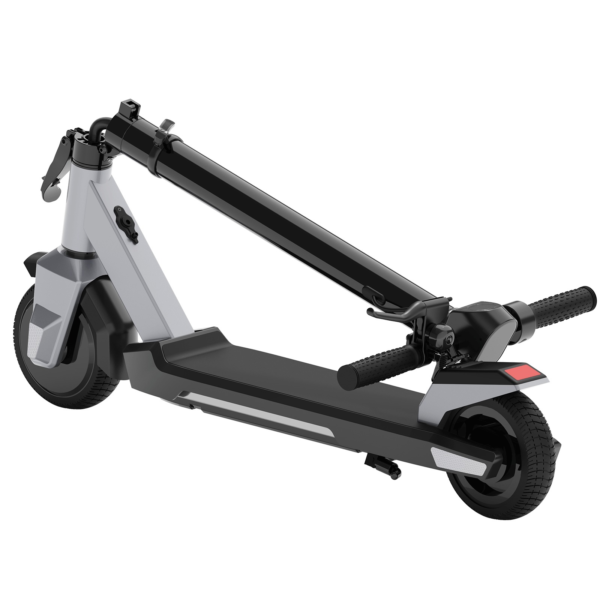
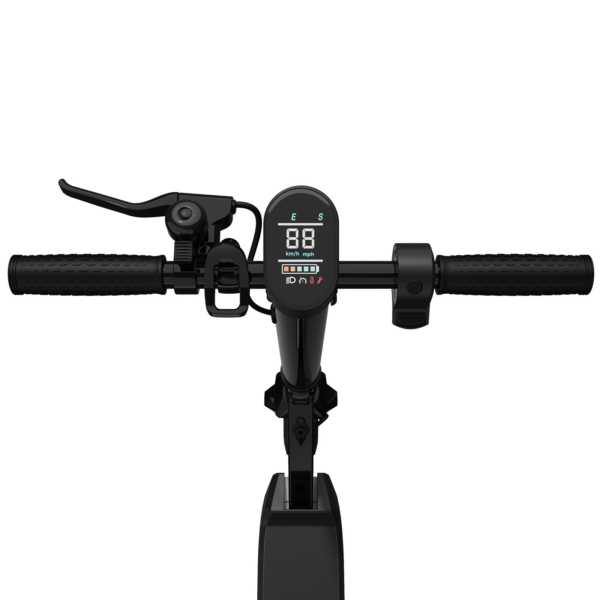
- Battery Range: 7 miles (11 km)
- Top Speed: 12 mph (19 km/h)
- Motor Power: 200 W
- Weight Capacity: 132 lb (60 kg)
- Charging Time: ~5 h
- Scooter Weight: 26.6 lb (12.1 kg)
PROS
- Lightweight 26.6 lb for easy carrying
- 6.5″ solid tires (no flats)
- LED headlight and tail/brake light
- Electronic + rear drum braking
- Compact folded size
CONS
- Short range (7 miles)
- Low top speed (12 mph)
- No suspension
- Low 132 lb max rider weight

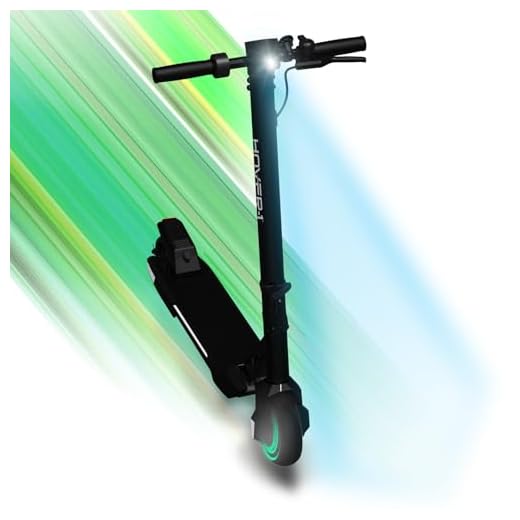
Table of contents
- What Is the Hover-1 Neo I?
- How the Hover-1 Neo I Works
- Key Specifications
- Design & Build Quality
- Performance Fundamentals
- Battery, Range & Efficiency
- Ride Quality & Comfort
- Braking & Safety Features
- Portability & Daily Usability
- Maintenance & Care
- Weather & Seasonal Considerations
- Hover-1 Neo I vs Alternatives
- Who the Hover-1 Neo I Is (and Isn’t) For
- FAQs
- Glossary
- Final Verdict
A compact, starter-friendly electric scooter with a simple fold and clear display, the Hover-1 Neo I is built for kids and new riders who need an easy, reliable way to get around short distances. It prioritizes stability and safety over brute power. As a result, it fits school runs, neighborhood cruises, and first rides where confidence and predictable handling matter most. If you’re also considering a slightly larger sibling with more room and tires to match, take a look at the Hover-1 Alpha as a brand-family alternative.
Because it’s designed for a lighter rider and shorter hops, the Neo I keeps weight low, uses solid tires to prevent flats, and includes a basic rear drum brake with electronic assist. Moreover, those choices make it less fussy to own and easier to maintain. If you’re looking for a straightforward, smooth introduction to e-scooters, you’re in the right place.
What Is the Hover-1 Neo I?
The Hover-1 Neo I is a foldable, entry-level electric scooter with a 200W front hub motor, a 32.4V 4Ah lithium-ion battery, and 6.5-inch solid tires. It’s tuned for a top speed of up to 12 mph (20 km/h) and a rated range of up to 7 miles (11 km). The frame supports riders up to 132 lb (60 kg) and the scooter itself weighs about 26.6 lb (12.07 kg), which keeps carrying manageable for teens and parents. In addition, it folds quickly at the stem and latches to the rear fender hook, so you can store it under a desk or in a trunk without fuss.
You also get a bright LED cockpit with speed, battery, and status icons. Cruise control is available, and the lighting set includes a headlight and a rear light for basic visibility at dusk. Importantly, the model is UL2272 certified and ships with a 6-month limited parts-and-labor warranty for peace of mind. Altogether, these specifications suit short, predictable trips where simplicity matters.
How the Hover-1 Neo I Works
At a high level, an e-scooter is a simple system: a battery powers a controller, which modulates current to a motor, and the rider commands it all with a throttle and brake. The Neo I follows that template in a friendly way.
Motor. A 200W brushless motor sits in the front wheel hub. Because it’s in-wheel, there’s no external chain or belt to adjust. As you press the thumb throttle, the controller feeds current to the hub motor and you accelerate smoothly. For new riders, this modest output is intentional. It’s enough to reach 12 mph (20 km/h), yet it won’t overwhelm a first-time rider on takeoff. Consequently, it builds confidence early.
Controller. Think of the controller like a dimmer switch that constantly changes the motor’s “brightness.” It interprets your throttle position, battery level, and speed mode, and then meters power accordingly. Because the Neo I has Eco and Sport modes, the controller also caps speed and acceleration to keep behavior predictable for different users. Therefore, you can match the feel to the rider.
Battery. The pack is a 32.4V, 4Ah lithium-ion unit (about 130 Wh). It’s sized for short trips, quick top-ups, and light weight. Under ideal conditions, it’s rated for up to 7 miles (11 km) per charge, and it recharges in up to 4 hours. Meanwhile, the modest capacity helps keep total scooter weight down.
Throttle. Your right thumb controls speed. The Neo I uses a simple thumb lever with a light, progressive feel. Once you reach a steady pace and enable the feature, cruise control can hold speed so you can rest your thumb on straight paths. As a result, long, flat paths feel less tiring.
Brakes. Stopping combines two systems: electronic braking through the motor plus a rear drum brake that adds mechanical bite. This blended setup gives a predictable lever feel and reduces wear compared with purely friction-based systems. Additionally, the sealed drum stays consistent across dusty conditions.
Key Specifications
The table below consolidates the manufacturer’s official specifications for quick reference. Values are shown in both imperial and metric units where relevant.
| Block | Item | Value |
|---|---|---|
| General | Model code | H1-NEOI |
| Rider weight limit | 132 lb (60 kg) | |
| Recommended age | 8+ years | |
| Colors | Blue, Gray, Black (availability varies) | |
| Performance & Power | Motor | 200W brushless, front hub |
| Top speed | Up to 12 mph (20 km/h) | |
| Hill climb (rated) | Up to 10° | |
| Battery, Charging & Electrical | Battery | 32.4V, 4Ah (≈129.6 Wh) |
| Range (rated) | Up to 7 mi (11 km) | |
| Charge time | Up to 4 h | |
| Charger input | 100–240V, 50/60 Hz | |
| Display | LED digital (speed, mode, battery, icons) | |
| Lights | Headlight and rear light | |
| Build & Dimensions | Tires | 6.5 in solid (front & rear) |
| Brake hardware | Rear drum + electronic (regen) | |
| Product weight | 26.6 lb (12.07 kg) | |
| Unfolded (L×W×H) | 35.2 × 18 × 38 in (89.3 × 45.6 × 96.4 cm) | |
| Folded (L×W×H) | 35.2 × 18 × 15.7 in (89.3 × 45.6 × 40 cm) | |
| Safety & Control | Modes | Eco (≈8 mph/13 km/h), Sport (≈12 mph/20 km/h) |
| Extra safety | Kick-to-start, speed unit toggle, battery alerts | |
| Features & Extras | Cruise control | Yes (enable via display sequence) |
| Kickstand & bell | Included | |
| Warranty & Compliance | Warranty | 6-month limited parts & labor |
| Certification | UL2272 |
Notes: Manufacturer rates speed and range under ideal conditions; real-world results vary by rider weight, terrain, temperature, and maintenance.
Design & Build Quality
The Neo I keeps things simple and sturdy. The aluminum steering column is wide for this class, which helps new riders feel planted when they steer. The deck sits low, so step-on and step-off feel natural, and the kickstand is easy to reach by foot. Nothing here tries to look aggressive; the lines are straightforward, which suits a youth-focused scooter. Furthermore, the low stance improves stability at low speeds.
Up front, the cockpit is clutter-free. The central LED display stays readable at a glance and uses large characters. You get a bell, a single brake lever, the throttle on the right, and the power button within thumb reach. Because you have fewer controls, you spend less time looking down and more time scanning ahead, which is exactly what beginners need. In addition, the grip texture stays secure even when hands get a bit sweaty.
The 6.5-inch solid tires are a deliberate choice. They avoid punctures and require no topping up, which reduces maintenance for families. However, they transmit more road texture than air-filled tires. On smooth sidewalks and bike paths, ride quality stays composed. On cracked pavement, you’ll feel more buzz underfoot. Even so, the chassis keeps squeaks in check when new, and the folding lock clicks into place with a positive, audible feel.
Fit and finish land where you expect for a starter scooter: tidy wiring, molded covers, and firm lever pivots. You will see some visible fasteners, which actually helps with basic upkeep. And because the unit weighs only 26.6 lb (12.07 kg), lifting it up a few steps is manageable for many teens and adults. As a result, the Neo I remains practical for multimodal trips.
Performance Fundamentals
Acceleration feel. Launch is gentle and stable. The controller meters power smoothly, so you won’t jerk forward when you tap the throttle. Kick-to-start adds a small safety buffer: the scooter won’t power from a standstill until it’s rolling a bit. That behavior reduces surprise takeoffs for first-time riders. Moreover, the predictable ramp-up builds trust during the first minutes of riding.
Cruising stability. Up to its 12 mph (20 km/h) cap, the Neo I tracks straight and steady. The short wheelbase and low deck help it pivot in narrow spaces, while the wide stem reduces twitches from small inputs. Because the tires are solid, you feel seams and bricks, yet the scooter doesn’t shimmy at its limited speed. On long, flat paths, turning on cruise control keeps pacing consistent and reduces thumb fatigue. Consequently, riders can focus on scanning traffic and pedestrians.
Hill behavior. On mild grades around 7–10%, speed drops predictably. The 200W motor prefers rolling hills and short rises rather than long, steep climbs. If a route includes a short ramp to a bike bridge, you’ll crest it, though you may slow near the top depending on rider weight. For sustained hills, plan to kick assist or choose flatter alternate streets. In short, the motor is tuned for flats and gentle slopes.
Battery, Range & Efficiency
The 32.4V, 4Ah pack equals roughly 130 Wh of capacity. That’s right-sized for quick errands, drop-offs, or campus rides. It’s rated for up to 7 miles (11 km) in ideal conditions. In practice, expect shorter range if you’re close to the 132 lb (60 kg) limit, ride in colder weather, or spend much time on rough surfaces. Conversely, lighter riders cruising in Eco mode on smooth paths often land near the rated figure. Therefore, match expectations to rider size and route.
Charging takes up to 4 hours from low to full. The charger accepts 100–240V input, which is convenient for travel. Because lithium-ion packs prefer partial rather than deep cycles, topping up after rides helps extend lifespan. Also, avoid storing it fully depleted; bring it up to around 50–60% if you won’t use it for a week or more. Additionally, the scooter benefits from a monthly maintenance charge if it sits.
Temperature affects range and feel, too. Below 40°F (4°C), the pack’s available energy drops, and internal resistance rises. You’ll notice slightly softer acceleration and fewer miles. When it’s hot, keep the scooter shaded during breaks and never leave the charger or battery in a closed car. Good battery care pays off with consistent performance and slower capacity fade over time. As a result, your total ownership experience remains more predictable.
Ride Quality & Comfort
Tires and surfaces. The 6.5-inch solid tires remove flats from the equation. However, they ride firmer than pneumatics. On fresh asphalt or well-poured sidewalks, the experience is calm and confidence-building. On older, cracked sections, you’ll feel the texture through your feet and hands. Bend your knees a bit over expansion joints; it helps your legs act like natural suspension. Likewise, easing off the throttle before rough patches smooths the ride.
Ergonomics. The deck is long enough for a relaxed, staggered stance. The low stack encourages stable starts and stops. Because the handlebar height isn’t adjustable, the scooter fits best for pre-teens and smaller teens. As always, have the rider stand naturally on the deck before a first outing to confirm their elbows sit slightly bent at the grips. In addition, a slightly wider stance improves balance at low speed.
Stem flex. At this output level, stem flex is minimal. The folding joint uses a twist-to-release latch with a positive lock. Once closed, it resists squeaks if you keep bolts snug. If you notice play over time, check the hinge and clamp hardware and re-tighten to spec. Notably, periodic fastener checks keep the steering feel crisp.
Braking & Safety Features
The brake lever controls two systems at once. First, the motor performs electronic braking, which slows the front wheel smoothly. Second, a rear drum brake adds mechanical stopping force. Because drums are sealed, they’re less affected by dust than rim brakes. The lever has a gentle ramp-up, so you can modulate easily. Practice stops in a parking lot before riding near pedestrians. Then, as confidence grows, try a few controlled emergency stops on an empty path.
Lighting is straightforward. The headlight improves your conspicuity at dusk, and the rear light signals that you’re there. The cockpit shows helpful icons for speed mode, battery bars, and cruise status. Finally, UL2272 certification means the electrical system follows a recognized safety standard. Even so, protective gear is essential: wear a helmet and closed-toe shoes every ride.
One more note: avoid rain and puddles. There’s no published IP water rating, and guidance is clear—treat the Neo I as a dry-weather scooter and store it indoors. This practice preserves electronics and reduces the risk of corrosion. Consequently, both reliability and longevity improve.
Portability & Daily Usability
Because it weighs about 26.6 lb (12.07 kg), the Neo I is easy to lift into a trunk or carry up a short flight of stairs. The fold takes seconds: twist the safety collar, pull the main latch, lower the stem, and catch the rear hook. The folded profile is compact at 35.2 × 18 × 15.7 in (89.3 × 45.6 × 40 cm), so it slides behind a dorm door or under a bench. Therefore, it fits well in small apartments and shared spaces.
In day-to-day use, solid tires spare you from flats and pressure checks. That’s a win for parents. The bell is loud enough for shared paths, and the display is bright enough to read in daylight. You can also toggle the speed units between mph and km/h by a quick button sequence, which helps when you switch contexts or teach metric. Meanwhile, the side kickstand deploys quickly during curbside stops.
For security, always bring the scooter indoors at school or work if possible. If you must leave it outside, use a sturdy lock through an appropriate frame point and avoid leaving it overnight. Because it’s light, theft deterrence relies on visibility and location as much as hardware. In short, pick bright areas and keep stops brief.
Maintenance & Care
A low-power scooter still benefits from regular checks. Here’s a simple schedule that keeps the Neo I feeling tight and safe.
Before each ride (30 seconds).
Look over the tires for cuts. Squeeze the brake lever to check for firm bite. Confirm the hinge latch fully locks and the bell rings cleanly. Additionally, scan the deck for debris.
Weekly.
Inspect visible bolts at the handlebar plate, stem clamp, and fender. If you hear creaks, snug the fasteners (don’t over-tighten). Wipe dust with a dry cloth. Avoid water sprays; electronics and connectors are not water-rated. Likewise, keep the charge port cap closed when not in use.
Monthly.
Charge the battery to 60–80% if the scooter sits; lithium-ion prefers partial storage. Check the brake cable for slack and adjust if the lever throw feels longer than usual. Make sure the kickstand spring snaps back firmly. In addition, check for any side-to-side play at the stem joint.
Battery habits.
Use only the included charger and keep the charge port clean and dry. Stop charging once the indicator turns green. If the scooter was ridden hard on a hot day, let it cool before plugging in. Follow the stated operating and charging temperatures and avoid liquids and extreme heat. As a result, you protect the pack and reduce long-term capacity loss.
Software & settings.
The Neo I doesn’t rely on a companion app. That’s actually a plus for families. However, the display offers useful settings such as unit switching and cruise control toggling. Learn the button sequences before handing the scooter to a younger rider. Likewise, agree on a default mode (Eco or Sport) that matches the rider’s experience.
Weather & Seasonal Considerations
Treat the Neo I as a dry-weather scooter. Avoid riding in rain, snow, or standing water, and remember that cold temperatures reduce range. When it’s chilly, expect less zip and fewer miles; ride gently and plan a shorter loop. When it’s hot, park in shade and store indoors away from heat sources. These habits improve safety and help the battery last longer. Consequently, you’ll enjoy more consistent performance year-round.
In autumn and spring, road debris can collect near curbs. Because the tires are solid and small, avoid lines of wet leaves, sand, or gravel, which can be slick. Keep both hands on the grips over uneven bricks, and bend your knees slightly to stay balanced. Additionally, slow down before entering painted crosswalks; they can be slippery when damp.
Hover-1 Neo I vs Alternatives
It helps to think in categories. The Neo I lives in the youth/light-rider neighborhood and campus segment. Within that space, it makes smart trade-offs.
Where it excels.
It’s easy to carry, simple to fold, and gentle to ride. The kick-to-start and capped Sport/Eco modes curb surprises for learners. Solid tires eliminate tube maintenance. The mix of electronic and drum braking is friendly and consistent. If your routes are flat and short, it hits the brief well. Moreover, the compact folded size helps on buses and in crowded hallways.
Where a commuter model wins.
Bigger commuter scooters often add 300–500W motors, 8.5–10-inch pneumatic tires, and longer decks. Those upgrades climb better, ride softer, and extend range. They also weigh more and cost more. If a rider regularly faces long hills or needs daily 8–12 mile round trips, a higher-spec commuter makes sense. On the other hand, the extra weight may be a drawback for younger owners.
Where a performance model wins.
Performance scooters jump to far higher power and top speeds. They aren’t appropriate for young riders, and they demand more maintenance. They also weigh a lot. If your priority is fun speed runs on empty paths, a performance model might appeal, but it’s overkill for school or neighborhood errands. Instead, consider the Neo I as a safe first step.
Where off-road models win.
Chunky tires and suspension are built for trails. They ride very differently and require more space and skill. The Neo I is a city and suburb tool, not a trail explorer. Likewise, its solid tires are better suited to smooth paths than loose terrain.
Who the Hover-1 Neo I Is (and Isn’t) For
Great for:
- Kids and smaller teens who are new to e-scooters.
- Short urban hops, school runs, and neighborhood rides.
- Families who want low maintenance and flat-tire-free tires.
- Riders who prefer a lightweight frame and quick fold for stairs or trunks.
Not ideal for:
- Heavier riders above 132 lb (60 kg).
- Daily round trips beyond 5–7 miles (8–11 km) without charging.
- Routes with long, steep hills.
- Regular wet-weather riding or puddle-filled paths (no water rating).
If this profile matches your needs, the Hover-1 Neo I is a sensible, low-stress choice. If you expect to grow into longer rides or larger hills soon, consider stepping up a class. Otherwise, keep enjoying the low-maintenance routine and simple controls.
FAQs
1) How fast does it go?
Up to 12 mph (20 km/h) in Sport mode. Eco mode caps speed lower for new riders. Additionally, cruise control can hold a steady pace on flat paths.
2) What’s the real-world range?
The rated figure is up to 7 miles (11 km). Expect less in cold weather, on rough surfaces, or with heavier riders. Plan routes with a buffer. In practice, smooth paths and lighter riders fare better.
3) Does the Neo I have cruise control?
Yes. Enable it from the display and hold a steady speed above a minimum threshold; you’ll hear a beep when it engages. Then, tap the brake or throttle to disengage.
4) Is it water-resistant?
There’s no published IP rating, and guidance advises against rain or puddles. Therefore, treat it as a dry-use scooter and store it indoors.
5) What kind of brakes does it use?
A combination of electronic braking and a rear drum brake controlled by a single lever. As a result, stops feel smooth yet predictable.
6) How old should a rider be?
The recommended minimum is 8 years. Parents should supervise and ensure protective gear is used. Moreover, set the mode to Eco for the first rides.
7) Where can I find a concise Hover-1 Neo I overview?
This article is your Hover-1 Neo I overview, summarizing specs, features, and best-use scenarios in one place.
Glossary
Ah (Amp-hours). A measure of battery capacity. Higher Ah generally means longer potential range at the same voltage.
Wh (Watt-hours). Voltage × capacity; a clearer measure of stored energy.
Brushless motor. An efficient electric motor design with fewer wear parts than brushed types.
Controller. The “brain” that meters battery power to the motor based on throttle, speed, and mode.
Regen (electronic braking). The motor resists rotation to slow the scooter; often paired with a mechanical brake.
Drum brake. A sealed brake that uses internal shoes pressing against a drum; durable and low-maintenance.
Kick-to-start. Requires a small manual push before the motor engages; helps prevent accidental takeoffs.
Cruise control. Holds a steady speed so you don’t have to keep pressing the throttle.
Stem flex. Noticeable movement at the handlebar stem under load; excessive flex can feel unstable.
UL2272 certification. A safety standard for the electrical systems of personal e-mobility devices.
IP rating. Ingress Protection code that shows dust and water resistance.
Solid tire. A puncture-proof tire made of rubber or foam; firmer ride than air-filled options.
Eco/Sport modes. Power and speed presets that adjust acceleration and top speed.
Kickstand. A spring-loaded leg that holds the scooter upright when parked.
Throttle. The control (usually a thumb lever) that commands acceleration.
Final Verdict
The Neo I focuses on the fundamentals: safe speed, simple controls, and easy ownership. Its light weight, solid tires, and basic but effective brakes make it a smart first e-scooter for kids and smaller teens. The 12 mph (20 km/h) limit keeps things calm while still feeling lively on bike paths, and the 7-mile (11 km) rating suits school commutes or quick errands when charging is available at home.
There are trade-offs. The small, solid tires ride firmly on cracked pavement, and the 200W motor won’t pull long hills. The rider weight cap also limits who can use it. Yet within its designed envelope—flat routes, short distances, and new riders—it performs exactly as intended. If you value predictability, low maintenance, and a compact fold, the Hover-1 Neo I is an easy recommendation. In the end, it delivers a balanced first e-scooter experience.
Specifications
General
| Model The Model specifies the exact version or name of the scooter. It helps identify its unique design, features, and specifications within the manufacturer’s product line. Knowing the model makes it easier to compare options, find compatible accessories, or look up support information. | Neo I |
| Brand The Brand identifies the manufacturer or company that designs and produces the scooter. A trusted brand is a sign of quality, reliability, and good customer support. Well-known brands often have higher standards for safety, performance, and after-sales service, giving you more confidence in your purchase. | Hover-1 |
| Release Date The Release Date indicates when the scooter model was officially launched on the market. This helps you know how current the design, technology, and features are. A newer release date often means updated components, improved performance, and the latest safety or smart features. | 17 November 2025 |
| Recommended Age Recommended Age indicates the minimum age range that the scooter is designed for, based on safety, size, and ease of use. Following the recommended age helps ensure that riders can handle the scooter’s speed, weight, and controls comfortably and safely. Always check local laws and use protective gear, especially for younger riders. | 8+ |
Performance & Power
| Motor Power (Wattage) What it means: The motor power, measured in watts (W), shows how strong the scooter’s electric motor is. Why it matters: Higher wattage usually means better acceleration, more torque, and improved performance on hills or rough terrain. For example, a 250W motor is good for flat city roads and light riders, while a 500W or 1000W motor provides more power for faster speeds or climbing steep inclines. | 200 W front hub motor |
| Top Speed The Top Speed indicates the maximum speed that the scooter can reach under optimal conditions. It’s usually measured on level ground with a fully charged battery and an average rider weight. A higher top speed allows you to travel longer distances faster, but always ensure you ride within legal speed limits and your personal comfort zone for safety. | 12 mph (19 km/h) |
| Battery Capacity Battery Capacity refers to the total amount of energy the scooter’s battery can store, usually measured in ampere-hours (Ah) or watt-hours (Wh). A higher battery capacity means you can ride longer distances on a single charge, reducing the need for frequent recharging. Keep in mind that actual range can vary depending on rider weight, terrain, speed, and weather conditions. | 32.4 V 4 Ah (130 Wh) |
| Estimated Range per Charge The Estimated Range per Charge indicates the average distance the scooter can travel on a single full battery charge. This range is calculated under optimal conditions, such as flat terrain, moderate speed, and average rider weight. Real-world range may vary depending on riding style, terrain, weather, and load. A longer range means fewer recharges and greater freedom for longer trips. | Up to 7 miles (11 km) |
| Hill Climb Ability Hill Climb Ability describes the maximum incline or slope that the scooter can handle while maintaining stable performance. It’s typically expressed as a percentage or in degrees. A higher hill climb rating means the scooter can tackle steeper hills without losing too much speed or power. Actual climbing performance may vary based on rider weight, battery charge, and terrain conditions. | Not specified |
| Drive System The Drive System refers to how power from the motor is delivered to the wheels. Electric scooters typically use either a hub motor (directly integrated into the wheel) or a chain/belt drive system. A high-quality drive system ensures smooth acceleration, efficient power transfer, and low maintenance. The choice of drive system affects performance, noise level, and overall ride experience. | Front hub (FWD) |
Charging & Electrical
| Charging Time Charging Time indicates how long it takes to fully recharge the scooter’s battery from empty to 100% using the standard charger provided. Faster charging means less downtime and more time on the road. Actual charging time may vary slightly depending on battery capacity, charger output, and environmental conditions. | Approx. 5 hours |
| Battery Type Battery Type refers to the specific technology used in the scooter’s battery, which affects performance, lifespan, weight, and charging time. Most modern electric scooters use high-quality lithium-ion (Li-ion) batteries because they offer a good balance of energy density, durability, and low maintenance. A reliable battery type ensures consistent power delivery and longer riding ranges. | Lithium-ion pack |
| Removable Battery A Removable Battery means the battery pack can be easily detached from the scooter for convenient charging and replacement. This feature allows you to charge the battery separately, swap it with a spare for extended range, or securely store it indoors in extreme weather. Removable batteries add flexibility and make it easier to keep your scooter powered up wherever you are. | Non-removable internal battery |
| Regenerative Braking Regenerative Braking is an energy-saving feature that converts some of the energy normally lost during braking back into battery power. When you slow down or brake, the motor works in reverse to generate electricity, which helps extend the scooter’s range and improves overall efficiency. This system also reduces wear on traditional brake components, leading to lower maintenance over time. | Not specified |
| Lighting Lighting refers to the built-in front and rear lights that enhance visibility and safety when riding in low-light conditions or at night. Good lighting helps you see the road ahead and ensures that other road users can see you. Many scooters include LED headlights, taillights, and sometimes brake lights or side reflectors for added safety and compliance with local traffic regulations. | LED headlight + rear LED/brake + reflectors |
Build & Dimensions
| Scooter Weight Scooter Weight refers to the total weight of the scooter when fully assembled, including the battery. This affects how easy it is to carry, lift, and store the scooter when not in use. A lighter scooter is more portable and convenient for commuting, especially if you need to carry it upstairs or onto public transport. Keep in mind that a sturdy frame and quality components may add to the weight but also contribute to better durability and ride stability. | 26.6 lb (12.1 kg) |
| Maximum Rider Weight Maximum Rider Weight indicates the highest rider weight that the scooter is designed to safely support while maintaining optimal performance and stability. Staying within this limit helps ensure reliable acceleration, braking, and climbing ability, and it protects the frame, suspension, and motor from excessive strain. Exceeding the recommended limit may reduce performance and increase wear on components. | 132 lb (60 kg) |
| Deck Size Deck Size refers to the dimensions of the scooter’s standing platform. A wider and longer deck provides more foot space, allowing you to stand comfortably and adjust your stance while riding. A well-sized deck improves balance and stability, especially on longer rides or at higher speeds. Compact decks, on the other hand, help keep the scooter lightweight and portable. | Low deck; compact frame |
| Handlebar Height Handlebar Height refers to the distance from the deck to the handlebars, which affects your riding posture and comfort. An appropriate handlebar height helps you maintain good balance, reduces strain on your back and arms, and makes steering more comfortable. Some scooters have adjustable handlebars to fit riders of different heights, while others have a fixed height for a streamlined design. | Fixed (unfolded height 38.1 in) |
| Folding Mechanism The Folding Mechanism describes how easily and securely the scooter can be folded for carrying and storage. A well-designed folding system lets you quickly collapse the scooter into a compact size, making it convenient to transport on public transit, store under a desk, or fit into a car trunk. Look for sturdy latches and safety locks to ensure the scooter stays firmly in place when folded or unfolded. | Quick-fold latch |
| Dimensions Folded Dimensions indicate the size of the scooter when it’s fully folded. This measurement shows how much space the scooter will take up when stored or carried, making it easier to check if it will fit in your car trunk, under a desk, or in a closet. Compact folded dimensions are ideal for commuters who need to bring their scooter on public transport or store it in tight spaces. | Folded: 35.2 × 17.7 × 12.5 in; Unfolded: 35.2 × 17.7 × 38.1 in |
| Material Material refers to the primary construction materials used for the scooter’s frame and key components. High-quality materials like aircraft-grade aluminum, reinforced steel, or durable composites provide strength, stability, and a lighter overall weight. A sturdy material ensures the scooter can handle daily wear and tear while maintaining safety and performance. | Not specified |
Safety & Control
| Brake Type(s) Brake Type(s) describe the braking systems the scooter uses to help you slow down or stop safely. Common brake types include mechanical brakes (like drum or disc brakes), electronic brakes, and foot brakes. Many scooters combine multiple braking systems for added safety and shorter stopping distances. The type and quality of brakes affect your control, especially when riding at higher speeds or on slopes. | Electronic front brake + rear drum brake |
| Suspension Suspension refers to the system that absorbs shocks and vibrations while riding, providing a smoother and more comfortable ride over uneven or rough surfaces. Scooters may have front suspension, rear suspension, or dual suspension for better shock absorption and stability. Good suspension helps reduce rider fatigue and improves control, especially when riding on bumpy roads or off-road paths. | None |
| Tire Type Tire Type refers to the kind of tires the scooter uses, which directly affects ride comfort, traction, and maintenance. Common types include solid (airless) tires, pneumatic (air-filled) tires, or hybrid options. Pneumatic tires offer better shock absorption and a smoother ride on rough surfaces, while solid tires are puncture-proof and require less upkeep. The right tire type helps ensure safe handling and a comfortable ride in different conditions. | 6.5″ solid tires |
| Tire Size Tire Size indicates the diameter and width of the scooter’s tires, which affect ride comfort, stability, and how well the scooter handles different terrains. Larger tires generally offer better shock absorption and a smoother ride over bumps and rough surfaces, while smaller tires keep the scooter lighter and more portable. Choosing the right tire size helps ensure a balance between agility and comfort. | 6.5-inch |
| Kickstand The Kickstand is a built-in stand that allows you to park your scooter upright when it’s not in use. A sturdy kickstand keeps the scooter stable and prevents it from tipping over, protecting it from scratches and damage. It also makes storing and accessing your scooter more convenient, whether you’re at home, work, or on the go. | Side kickstand |
| Water Resistance Rating Water Resistance Rating indicates how well the scooter is protected against water and moisture, usually shown as an IP (Ingress Protection) rating. This rating helps you understand whether the scooter can handle light rain, splashes, or wet roads without damage. While most scooters are not fully waterproof, a good water resistance rating adds peace of mind when riding in changing weather conditions. Always avoid deep puddles or submerging the scooter to protect its electrical components. | Not specified |
Features & Extras
| Display/Console The Display (or Console) shows important real-time information about your ride, helping you monitor your scooter’s status at a glance. Typical displays show speed, battery level, distance traveled, and riding mode. Some models also include additional features like Bluetooth connectivity, app integration, or backlighting for better visibility at night. A clear and easy-to-read display enhances safety and convenience on every trip. | LED digital display (speed, battery, mode, headlight indicator) |
| Ride Modes Ride Modes refer to the different speed and power settings you can choose to match your riding style or road conditions. Common modes include eco for maximum range and energy efficiency, standard for everyday balance, and sport or turbo for higher speed and stronger acceleration. Switching between ride modes allows you to customize performance, conserve battery, and ride safely in various environments. | Not specified |
| Smart App Connectivity Smart App Connectivity lets you pair your scooter with a dedicated mobile app via Bluetooth. Using the app, you can monitor real-time ride stats like speed, battery level, and range, adjust settings such as ride modes or cruise control, lock the scooter for added security, and sometimes receive firmware updates. This feature adds convenience and allows you to personalize your riding experience right from your smartphone. | Not specified |
| Anti-Theft System The Anti-Theft System helps protect your scooter from unauthorized use or theft. This feature can include built-in alarms, electronic motor locks, GPS tracking, or remote locking through a mobile app. A good anti-theft system provides peace of mind when parking your scooter in public spaces, adding an extra layer of security to safeguard your investment. | Not specified |
| Cruise Control Cruise Control allows you to maintain a steady speed without continuously holding the throttle. This feature makes longer rides more comfortable by reducing hand fatigue and providing a smoother, more relaxed riding experience — especially on flat, open roads or bike lanes. For safety, cruise control can usually be easily activated or deactivated while riding. | Not specified |
| Accessories Included Accessories Included lists the additional items that come with the scooter to enhance your riding experience and convenience. Common accessories may include a charger, kickstand, bell, lights, phone holder, or carrying strap. These extras add value by making your scooter safer, easier to use, and ready to ride straight out of the box. | Scooter, wall charger, manual |
Warranty & Compliance
| Warranty Period The Warranty Period indicates how long the manufacturer guarantees the scooter against defects in materials and workmanship under normal use. A good warranty provides peace of mind, showing the brand’s confidence in its product quality. Always check what parts are covered, such as the frame, battery, and motor, and follow the maintenance guidelines to keep your warranty valid. | 6 months (parts & labor) |
| Certifications Certifications confirm that the scooter meets specific safety, quality, and environmental standards set by recognized organizations or regulatory bodies. Common certifications may include CE, RoHS, UL, or other local compliance marks, depending on your region. These certifications ensure that the scooter is manufactured to high standards and is safe and legal to use in your country. | SGS safety certification; region-dependent |
Price Comparison




